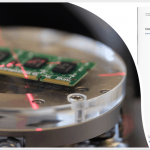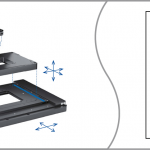Dynamic Error Compensation Improves Stage Accuracy
What is Positioning Error?
Motion Positioning Systems will always experience some amount of positioning error (or more commonly known as inaccuracy). The inaccuracy occurs as there is a difference between the measured distance of the target position which the system is commanded to move, and the actual position, measured by an external metrology device.

Position Error – Defined by the distance between the Target Position and the Actual Position. (Source: https://www.pi-usa.us/en/tech-blog/improving-stage-accuracy-with-acs-dynamic-error-compensation/)
The position accuracy can be influenced by a number of different factors:
- Imprefections in the position feedback system, drive mechanism, guidance errors of bearings and deflections of the mounted structure.
- Location in space relative to where the payload or sensor is located (“point of interest”).
The approach for correction
To account for this errors the motion profile is adjusted via a preset error correction map. The ability to change the motion profile is called Dynamic Error Compensation and comes as standard in all our SPiiPlus Controllers, supplied by ACS Motion Control.
Furthermore, measuring the position accuracy differs between rotational stages and linear stages. The motion profile is corrected throughout the stages full motion using the data from the position error measurements. This feature is controlled via the Dynamic Error Compensation found in all ACS Motion Controllers.
Find out more
To read more about how our controllers use Dynamic Error Compensation visit our supplier Physik Instrumente’s blog post. You can find applicable controllers by visiting ACS Motion Control or by contacting us for more information.




